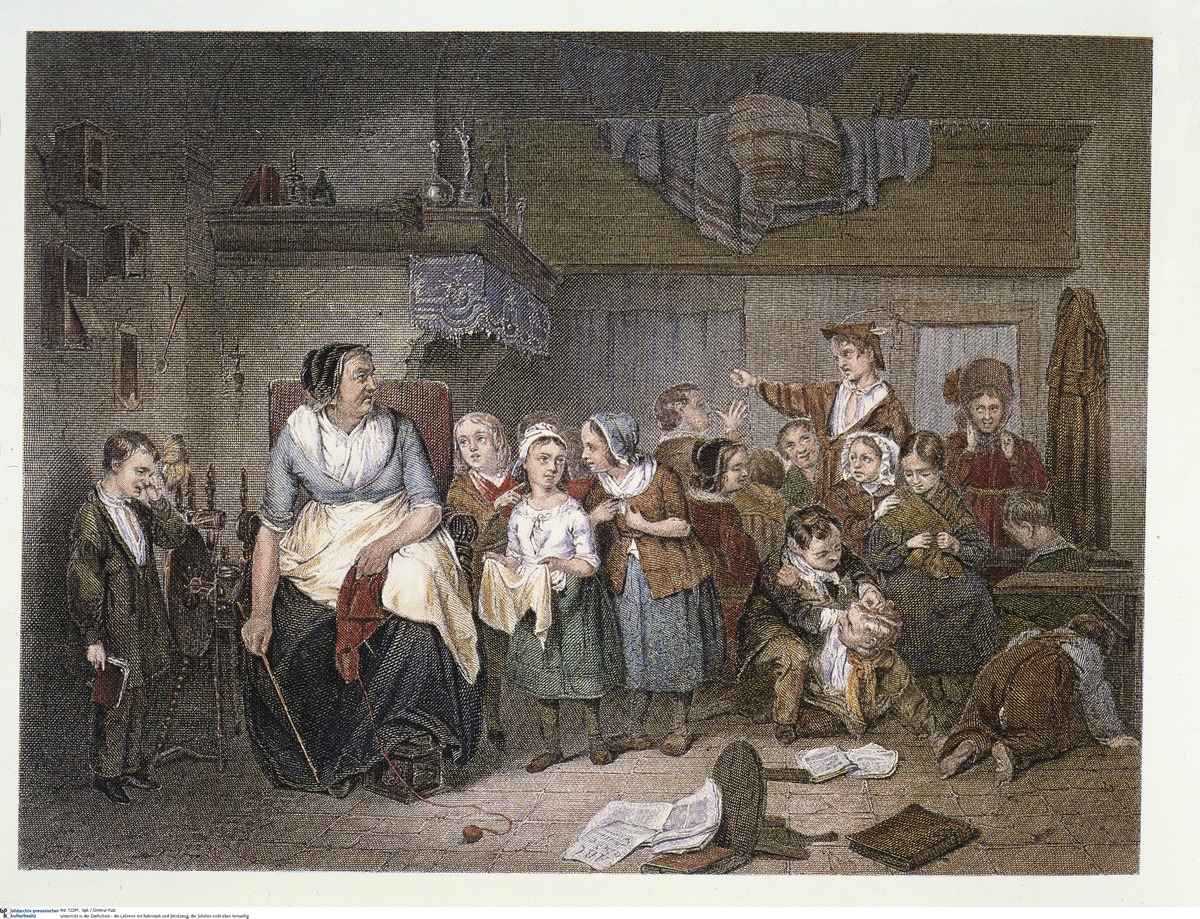Abstract
This engraving underscores the disparities between urban and rural schools. The village school depicted here lacks a proper classroom: boys and girls of different ages are crowded together in one disorderly room. Moreover, the emphasis appears to be on supervision rather than instruction—an impression supported by the teacher’s cane, presumably a disciplinary instrument. Various visual clues—the spinning wheel at the right, the teacher’s knitting, the cream-colored cloth held by one of the girls—point to a curriculum based on practical skills and handicrafts as opposed to intellectual development. The conditions and curricula of rural schools made it hard for their impoverished students to acquire basic literacy. Opportunities for higher education were non-existent for poor rural children, especially since they had to work in the fields from a young age and therefore missed school frequently. Steel engraving, c. 1840.
